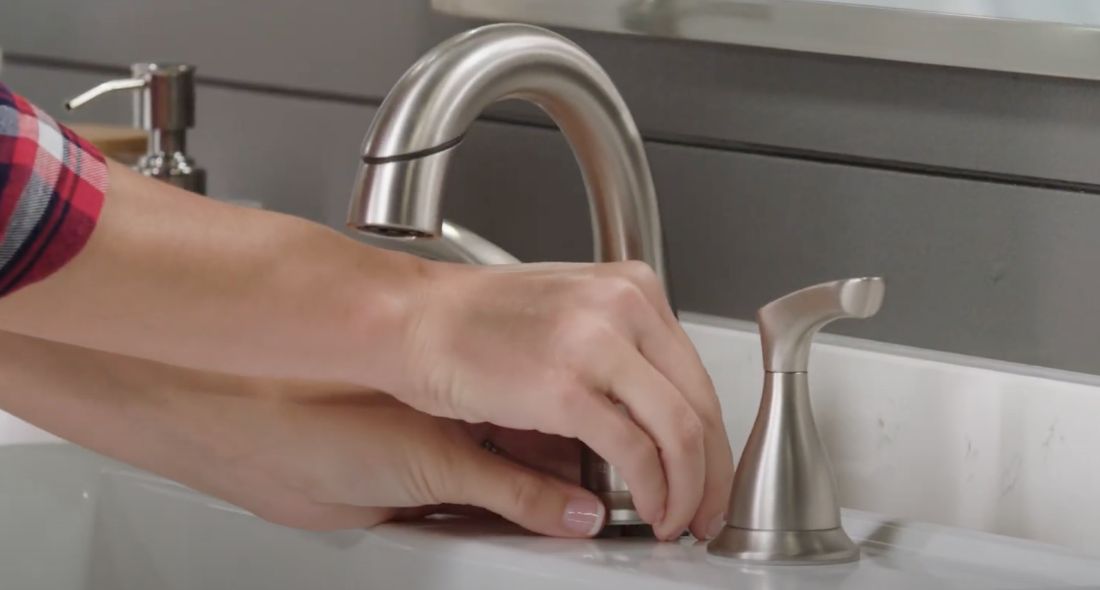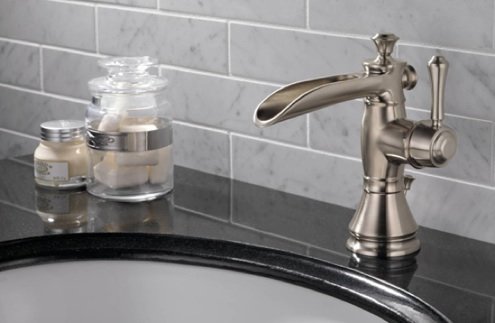We have come across this post pertaining to Why Is It Important To Fix Your Leaking Tap/Faucet? below on the internet and think it made perfect sense to talk about it with you on my blog.

Leaking faucets may look like a minor hassle, but their influence exceeds just the annoyance of the audio. From drainage to incurring unnecessary financial prices and health and wellness risks, disregarding a leaking faucet can bring about numerous consequences. In this short article, we'll explore why it's vital to resolve this typical family problem immediately and properly.
Wastefulness of Water
Ecological Effect
Trickling taps add dramatically to water wastefulness. According to the Epa (EPA), a single faucet leaking at one drip per secondly can throw away greater than 3,000 gallons of water per year. This not only strains water resources yet additionally influences environments and wild animals dependent on them.
Step-by-Step Guide to Taking Care Of a Dripping Tap
Tools Needed
Before attempting to repair a trickling tap, collect the essential tools, including a flexible wrench, screwdrivers, replacement parts (such as washers or cartridges), and plumber's tape.
Usual Tap Issues and Their Solutions
Identify the sort of faucet and the specific issue creating the drip. Typical issues include worn-out washing machines, rusty shutoff seats, or malfunctioning O-rings. Refer to producer instructions or on-line tutorials for step-by-step guidance on fixings.
Financial Expenses
Raised Water Bills
Beyond the ecological influence, leaking taps can blow up water expenses substantially. The gathered wastage with time equates right into higher utility expenditures, which could have been avoided with timely repairs.
Prospective Property Damage
Additionally, prolonged leaking can bring about damage to components and surfaces bordering the faucet. Water buildup can create staining, deterioration, and even architectural problems if left neglected, resulting in extra repair expenses.
Wellness Issues
Mold And Mildew and Mold Growth
The continuous visibility of dampness from a dripping faucet develops a perfect atmosphere for mold and mildew and mold development. These fungis not only jeopardize indoor air high quality but likewise present health and wellness threats, specifically for people with respiratory system problems or allergic reactions.
Waterborne Conditions
Stationary water in trickling taps can end up being a breeding place for germs and other virus, enhancing the threat of waterborne illness. Impurities such as Legionella germs thrive in stagnant water, possibly leading to major illnesses when ingested or breathed in.
Do it yourself vs. Expert Repair work
Benefits and drawbacks of DIY Repair
While some may try to fix a leaking tap themselves, DIY fixings come with their very own collection of challenges. Without appropriate understanding and tools, do it yourself efforts can aggravate the issue or cause insufficient repairs, prolonging the problem.
Benefits of Hiring a Specialist Plumber
Hiring a professional plumber makes sure that the underlying cause of the dripping faucet is dealt with successfully. Plumbers have the proficiency and equipment to diagnose and repair tap issues efficiently, conserving time and decreasing the danger of additional damage.
Environmental Duty
Specific Payment to Conservation
Taking responsibility for repairing dripping taps lines up with wider efforts towards water conservation and ecological sustainability. Every individual's activities collectively make a substantial effect on preserving priceless resources.
Lasting Living Practices
By prioritizing prompt repairs and embracing water-saving habits, people add to sustainable living techniques that benefit both existing and future generations.
Preventive Measures
Normal Maintenance Tips
To avoid trickling taps, perform regular upkeep such as cleaning up aerators, checking for leaks, and changing damaged components promptly. Furthermore, think about mounting water-saving devices or updating to extra efficient components.
Importance of Prompt Repair Works
Resolving trickling taps as quickly as they're noticed prevents additional water wastefulness and prospective damages, eventually conserving both water and cash in the long run.
Impact on Building Worth
Assumption of Well-Maintained Property
Maintaining a residential property in good condition, including attending to maintenance issues like leaking faucets, boosts its viewed worth and charm among potential buyers or occupants.
Influence on Resale Worth
Residences with well-maintained plumbing components, consisting of faucets, command greater resale worths in the real estate market. Dealing with trickling taps can contribute to a positive impact throughout residential property inspections and settlements.
Final thought
Resolving a trickling faucet goes beyond mere convenience; it's a necessary action toward saving water, lowering financial costs, and protecting health and wellness and property. Whether through DIY repairs or professional support, acting to repair leaking faucets is a small yet impactful means to advertise accountable stewardship of resources and contribute to a much healthier, extra lasting future.
How to Fix a Dripping or Leaky Faucet
A leaking faucet is one of the most common problems that homeowners encounter, but it being commonplace doesn’t make it any less annoying. The constant drip drip drip of a leaking bathtub faucet, showerhead, or sink tap can disturb your home’s serenity. Left neglected, a dripping faucet can also result in higher water bills and discoloration or mold growth in your sink or plumbing fixtures.
Fortunately, you don’t have to be a trained plumber to know how to stop a dripping faucet. With some basic tools, replacement parts, and a little patience, leaky faucet repair is a breeze. In this article, we’ll explain what causes dripping faucets and how you can fix them.
What Causes a Leaking Faucet?
Kitchen and bathroom faucets come in all manner of designs, but most involve some combination of valves, O-rings, seals, and washers. The O-ring is usually the weakest link, but any one of these pieces can wear down over time. Heat, moisture, temperature fluctuations, minerals, mold, and movement can contribute to warping and corrosion, breaking the watertight seal. This just comes with the territory of being a homeowner. Everything is always subject to wear and tear, and some component parts of your appliances and fixtures need to be replaced on occasion. At least replacement O-rings are cheap!
More rarely, dripping faucets can be a symptom of excessively high water pressure. Were this the case in your home, you would probably notice that the leak is not isolated to one faucet. Water pressure issues are harder to resolve on your own. We recommend contacting a professional plumber if you suspect your water pressure is too high.
How to Fix a Dripping Faucet
Pipe wrench or monkey wrench Allen wrench set Screwdrivers Old towel or rag Shut off the water.
Before you do anything, you need to turn off the water to keep from drenching your kitchen or bathroom. You should find a valve under the sink and against the wall. Once you’ve turned this valve, try turning the faucet on to confirm that the water source has been cut off.
If you can’t locate your local valve for the faucet you’re working on, you can always shut off the water to the house at the main valve. Of course, this will prohibit anyone from using the sinks, showers, or toilets while you’re working on the faucet that’s giving you trouble.
Plug or block the drain.
You’ll be disassembling the faucet and removing some small bits of hardware. Plug the drain with a stopper or rag to avoid the possibility of a small screw falling into your P-trap.
Take apart the faucet assembly.
There are several varieties of kitchen and bathroom faucets, each with its own manner of assembly. For detailed instructions on how to disassemble your faucet, you can refer to the fixture’s manual or contact the manufacturer. If you know whether you have a ball, disc, cartridge, or compression faucet, you can find detailed schematics online.
In general, you need to begin by removing the faucet handles. You might notice a small screw that you’ll need to remove with a screwdriver or Allen wrench. If you don’t see any visible securing hardware, it’s likely hidden under a decorative cap that can be unscrewed or popped off with flathead screwdriver.
Remove each piece methodically, consulting a schematic when necessary. Take notes or arrange the pieces in such a way to make it easier to correctly reassemble the faucet later.
Remove the cartridge.
Once you’ve removed the handles and securing hardware, you should be able to remove the valve cartridge or stem. Some cartridges will slide right out. Other faucet models will require you to loosen a nut with a pipe wrench before you can remove the valve stem.
Examine the exposed hardware.
With the cartridge or stem removed, inspect the component parts. Check the rubber O-rings for wear and tear. Also examine the seat washer for corrosion or other damage. These pieces are usually the responsible parties for a dripping faucet, but it’s worth inspecting the other component parts while you have the faucet disassembled.
Find replacement parts.
Once you’ve identified which faucet component has failed, find an identical replacement. Your local hardware store should have O-rings, seat washers, and other standard components in stock. If you have a luxury or uncommon faucet, you may have to contact the manufacturer for a replacement part.
It’s a good idea to take your old parts with you to the hardware store so you can compare them with the store’s inventory and be sure you’re purchasing the correct replacement.
Reassemble the faucet.
With your new parts in hand, reconstruct the faucet and handles. Don’t be tempted to overtighten screws or nuts. You might think this could create a better seal, but it can instead damage or bend a delicate part of the assembly and create a new problem for you.
Turn on the water and test the faucet.
The only thing left to do is test your work. Unplug the sink, turn the water back on, and try the faucet. Congratulate yourself on a job well done!
https://www.libertyhomeguard.com/how-to-fix-a-dripping-or-leaky-faucet/

I stumbled upon that blog posting about Water Dripping from Faucet: Why and How to Fix when browsing the internet. Please take the opportunity to distribute this blog posting if you appreciated it. I appreciate your readership.